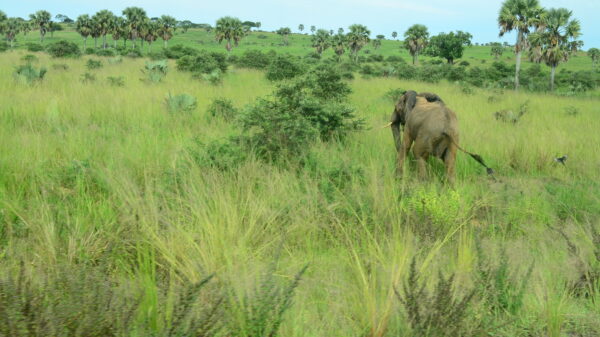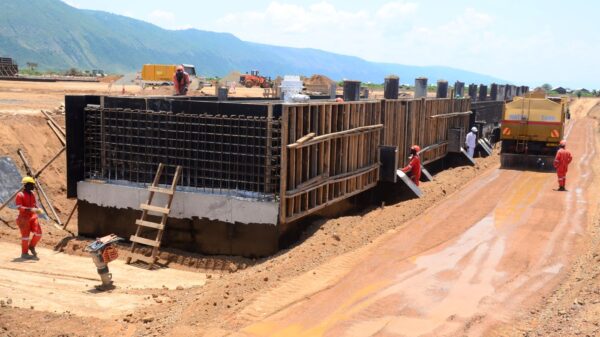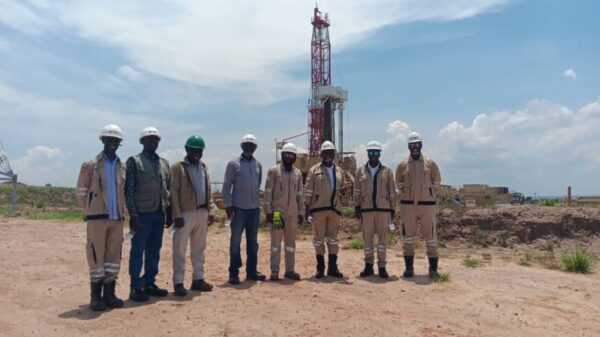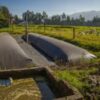Diana Taremwa Karakire
Kampala, UGANDA
Uganda, which exports more coffee beans than any other country on the continent, now leads the cusp of an oil boom in East Africa after doubling its crude reserves in September to 6.5 billion barrels following months of extensive exploration activities.
The region’s third largest economy is set to spend billions of dollars on high profile infrastructure projects during the 2014-15 fiscal year, part of President Yoweri Museveni’s efforts to revamp inadequate infrastructure, create jobs and spur economic growth
The infrastructure projects on the cards include at least four hydropower plants, the paving of more than 2,000 kilometers of roads, a railway network worth, $8billion roads, as well as a $2.5 billion oil refinery. The bulk of these projects are funded by Chinese-loans as the country re positions itself to enter the league of oil producers on the continent.
Over the past couple of years, Uganda has been grappling with a string of economic disruptions- from reduced exports to South Sudan, its hitherto largest export market following the outbreak of fighting in December to aid freezes after President Museveni signed a controversial antigay law. But the country appears to be turning a corner in healing its battered economy.
Uganda’s economy is now expected to expand by at least 6.4% in the fiscal year ending June 2015, compared with 6% last year, according to the International Monetary Fund. But this projection is less optimistic than the finance’s ministry’s 7% although officials remain upbeat that the government’s growth projection target remains within reach on account of huge infrastructure spending.
Years of relative peace, political stability and huge development aid inflows have spurred the Ugandan economy for the past two decades, helping the size of economy to grow six-fold to reach some $20 during the 2013-14, according to the World Bank. This growth has boosted demand for electricity as well as infrastructure projects.
Among the priority infrastructure projects include the 600 megawatt Karuma hydro power project located on the spectacular Murchison falls on the Nile River. The $1.7 billion plant is one of the priority projects being developed in Uganda to kick start the rehabilitation and recovery of the formerly war ravaged Uganda, which is slowly recovering from a two-decade civil conflict orchestrated by rebel group Lord’s Resistance Army, led by fugitive war lord, Joseph Kony.
Along with at least three other plants and the $8 billion standard gauge railway network, these projects are being funded with concessionary loans from China, whose interest in the country has been awakened by the huge oil reserves, deposits of copper, tin and gold as Chinese-owned enterprises firm their presence in Uganda in search of unexplored natural resources for resource hungry Beijing.
To supplement the funding of other ambitious projects, Uganda is planning to issue a $1 billion Eurobond. Because most of the projects are now funded with concessional borrowing, there is as ample room to borrow on market terms.
Proceeds from the borrowing should facilitate the bankrolling of some of the projects including the 60,000 barrels-a-day refinery which is being developed under a private-public partnership. The government is also expected to co-fund a minority stake in the 1,300-kilometer export pipeline to evacuate crude from the oil fields in the Lake Albertine Rift basin to the Kenyan port of Lamu.
These projects are expected to help the country break into the ranks of middle income nations on the continent over the next 3-5 years, according to Maria Kiwanuka the finance ministry, a feat that would see the country follow the footsteps of Kenya which recently broke into the ranks of top ten economies on the continent after rebasing its economic data.
Over the years, Uganda has forged a strong relationship with China. Last year, President Museveni held talks with his Chinese counterpart Xi Jinping where they agreed a deal under which China will fund a number of projects in the country. Uganda will then pay for Chinese-built infrastructure projects with future oil revenues
But about one quarter of Uganda’s 37 million people live in poverty, according to World Bank data on its website.
As a result of the high levels of poverty, the population is prone to abrupt spike in global commodity prices-notably food. Three years ago, raucous street projects rocked the country threatening to plunge government in total turmoil.
In response the central bank adopted an inflation targeting monetary policy, seeking to reign on the steep commodity prices. Headline inflation rate has since receded to lowest levels in two years hitting 1.4 % in September.















